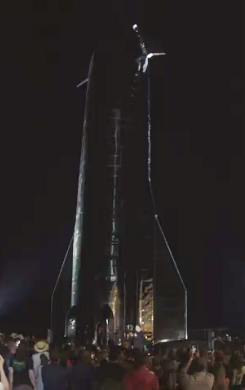Relativity raises $140 million in third funding round
Capitalism in space: The new smallsat rocket company Relativity announced yesterday that it has raised $140 million in its third funding round, providing it enough funding to complete and launch its Terran 1 rocket.
The new round brings the total raised by the Los Angeles-based company to $185 million. The new funding, Relativity executives said, will be sufficient to complete development of its Terran 1 rocket and begin commercial operations in 2021. It will support expansion of its headquarters and establishment of a factory for rocket production at the Stennis Space Center in Mississippi, where it currently tests its engines.
“That round will carry us past first flight of Terran 1,” said Jordan Noone, co-founder and chief technology officer of Relativity, in an interview. “This round is all the capital required to get to first flight, build out more of the Mississippi test site, Launch Complex 16 in Florida and expand our L.A. headquarters and manufacturing.”
That first launch, once scheduled for late 2020, is now planned for February 2021. “That original prediction for when first flight would be was made about four years ago, so moving it two months to the right here is not bad,” he said. Part of the reason for the slip is a decision to develop a larger payload fairing with twice the volume of the original one, based on feedback from prospective customers.
This all sounds very encouraging. The test will be their engineering concept to manufacture their rocket entirely by 3D printing, something no one has ever done before. If they experience any problems with this those launch dates will immediately be threatened.
Capitalism in space: The new smallsat rocket company Relativity announced yesterday that it has raised $140 million in its third funding round, providing it enough funding to complete and launch its Terran 1 rocket.
The new round brings the total raised by the Los Angeles-based company to $185 million. The new funding, Relativity executives said, will be sufficient to complete development of its Terran 1 rocket and begin commercial operations in 2021. It will support expansion of its headquarters and establishment of a factory for rocket production at the Stennis Space Center in Mississippi, where it currently tests its engines.
“That round will carry us past first flight of Terran 1,” said Jordan Noone, co-founder and chief technology officer of Relativity, in an interview. “This round is all the capital required to get to first flight, build out more of the Mississippi test site, Launch Complex 16 in Florida and expand our L.A. headquarters and manufacturing.”
That first launch, once scheduled for late 2020, is now planned for February 2021. “That original prediction for when first flight would be was made about four years ago, so moving it two months to the right here is not bad,” he said. Part of the reason for the slip is a decision to develop a larger payload fairing with twice the volume of the original one, based on feedback from prospective customers.
This all sounds very encouraging. The test will be their engineering concept to manufacture their rocket entirely by 3D printing, something no one has ever done before. If they experience any problems with this those launch dates will immediately be threatened.




